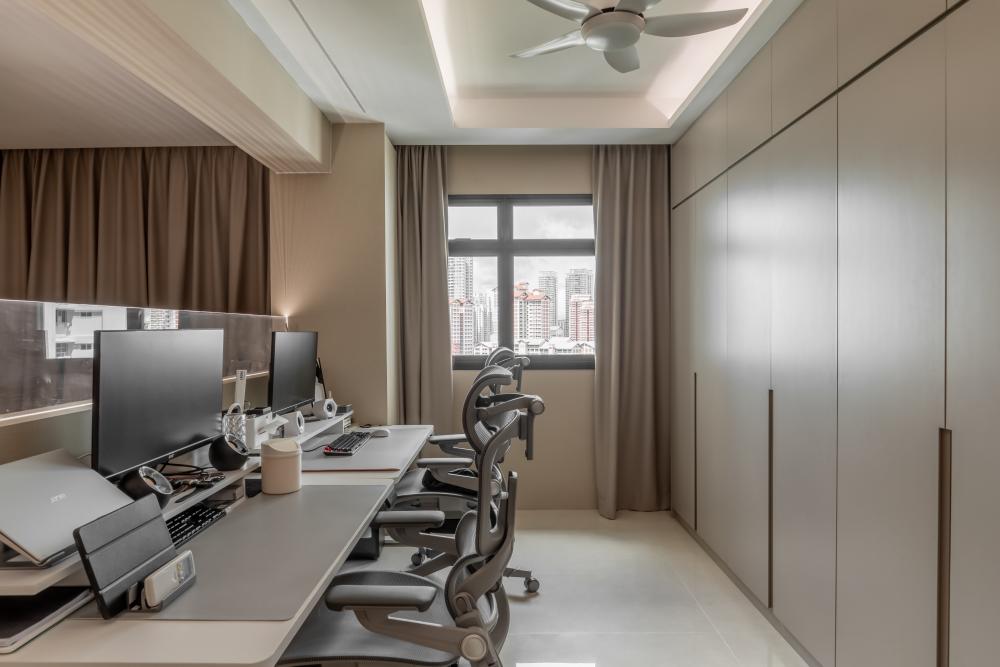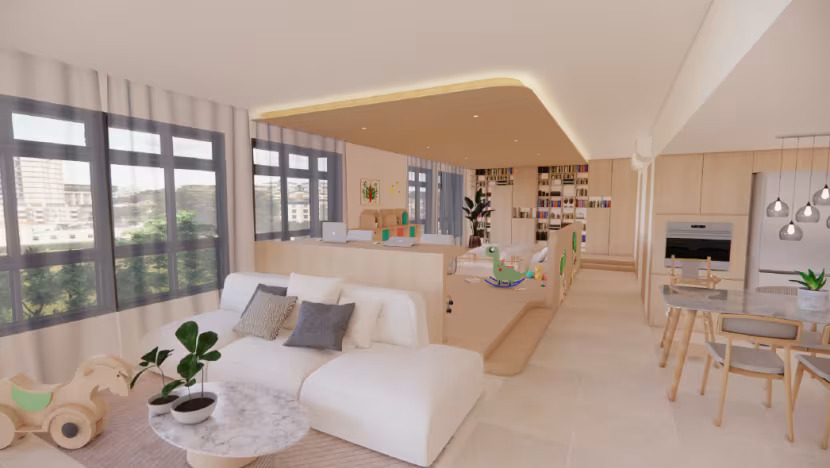How To Visualise And Create Your Dream Space
Embarking on the journey of transforming your living space into a dream home can be both exciting and daunting, especially for those without a background in design.
Creating a space that resonates with your personality and preferences involves a thoughtful process of visualization and careful execution.
In this guide, we’ll explore practical steps for homeowners to bring their dream spaces to life.
Step 1: Finding Inspiration
Your journey begins with self-discovery. Here, take a moment to reflect on your personal tastes and preferences.
Consider the colors, styles, and themes that resonate with you. Are you drawn to the sleek and modern lines of contemporary design, or does the warmth of traditional elements appeal to you?
If you need some inspiration, the digital realm is a treasure trove.
Dive into online platforms that cater to home design, exploring blogs, social media, and more.
When seeking inspiration, explore a diverse range of sources, encompassing both the idealized vision of your dream home and a more practical envisioning tailored to the realities of your living space.
For example, if you search for “bathroom inspiration” on Pinterest, you’ll probably see pictures of extravagant, luxurious bathrooms that house a bathtub, a shower, and still have space left over for his-and-hers sinks.
But if you’re staying in a small apartment in Singapore, you probably won’t have enough space to do something similar.
Another example: if you search for “living rooms” on Pinterest, you might see larger-than-life living spaces with high ceilings and wall-to-floor glass windows.
Again, for those living in a smaller apartment in Singapore, the challenge lies in adapting these grand concepts to a more modest scale.
So, while it’s perfectly fine to look at these idealized portrayals of your dream home on Pinterest, you’ll also want to seek out local sources, which can provide a more contextualized and practical perspective.
Local inspirations offer a nuanced understanding of design solutions that resonate with the specific characteristics of your environment, whether it be the spatial constraints of a Singaporean apartment, the unique architectural elements of local homes, or the cultural influences that shape design trends.
For local inspiration, look no further than Hometrust!
You can search and filter by:
- Popular spaces such as living rooms, bedrooms, kitchen, bathroom, dining room…
- Popular styles such as modern, contemporary, scandinavian, minimalist, industrial…
- Projects and renovations where you can see renovations of entire homes
Finally, another great channel for gaining inspiration is in the world of YouTube house tours.
Subscribe to channels that go beyond showcasing beautiful homes—look for those that provide in-depth discussions about the design process.
Watching detailed house tours can offer practical insights into why certain design choices are made, helping you refine your own vision.
Step 2: Creating A Vision Board
Now that you have a clearer understanding of your preferences, it’s time to create a vision board.
This tangible representation will serve as a visual guide for your dream space.
The easiest way to go about this is to pin different images onto a Pinterest board.
(Remember, you’re not limited by the images that you find on Pinterest – if you find something on Hometrust that resonates with you, you can always upload that image as a Pin on Pinterest).
The key is to curate a collection of images, colors, and textures that evoke the desired atmosphere.
Visuals aside, also consider the emotional response you want your space to elicit.
Is it a cozy retreat for relaxation or an energetic hub for creativity?
Include elements that capture these feelings, be it through soothing color palettes, comfortable furnishings, or inspiring decor.
Your vision board should encapsulate the essence of your dream space.
Step 3: Understanding Your Space
Before diving into the renovation process, it’s crucial to analyze the layout and functionality of your current space.
Understanding the intricacies of your existing environment lays the foundation for a successful transformation, ensuring that your design decisions not only enhance aesthetics but also improve the overall functionality and usability of your home.
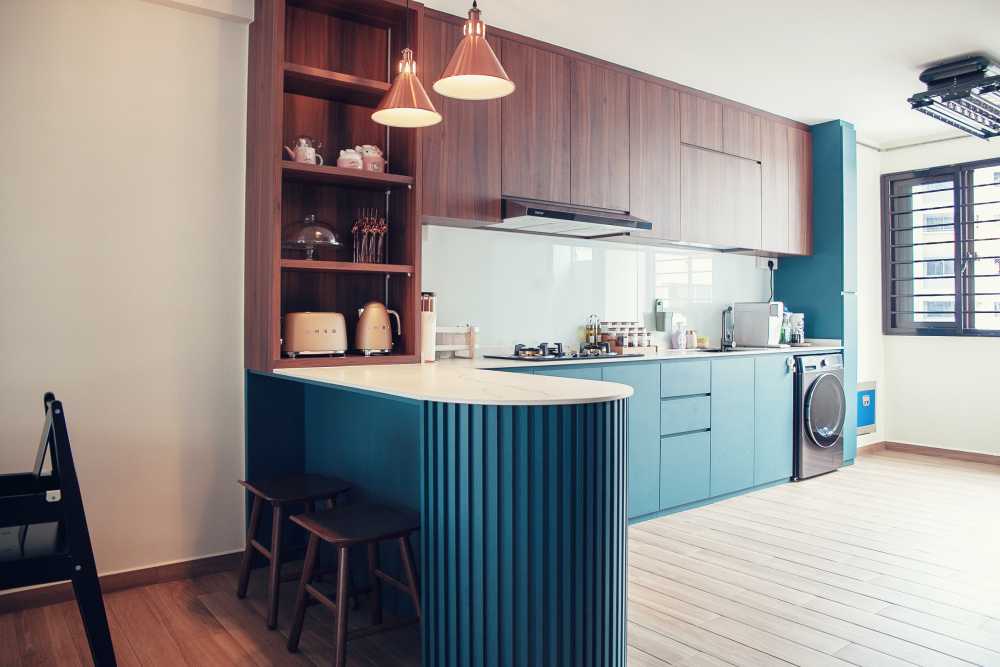

121 Teck Whye Lane ($55,000) by JP Atelier Pte Ltd
Start by evaluating the spatial dynamics – take note of room dimensions, traffic flow, and the interplay of natural light.
Consider the practical aspects of each area, such as high-traffic zones, storage needs, and potential multifunctional spaces. This thorough assessment allows you to identify the strengths and challenges inherent in your current layout.
In the context of a Singaporean living space, where compactness often prevails, optimizing every square foot becomes paramount.
Take stock of existing storage solutions, assess how well they meet your needs, and explore creative ways to maximize storage without compromising on style.
Additionally, be mindful of architectural features unique to Singaporean homes.
Whether it’s the strategic placement of windows to capture cross-ventilation or the challenge of integrating design elements in compact bedrooms, understanding these nuances empowers you to make informed decisions during the renovation process.
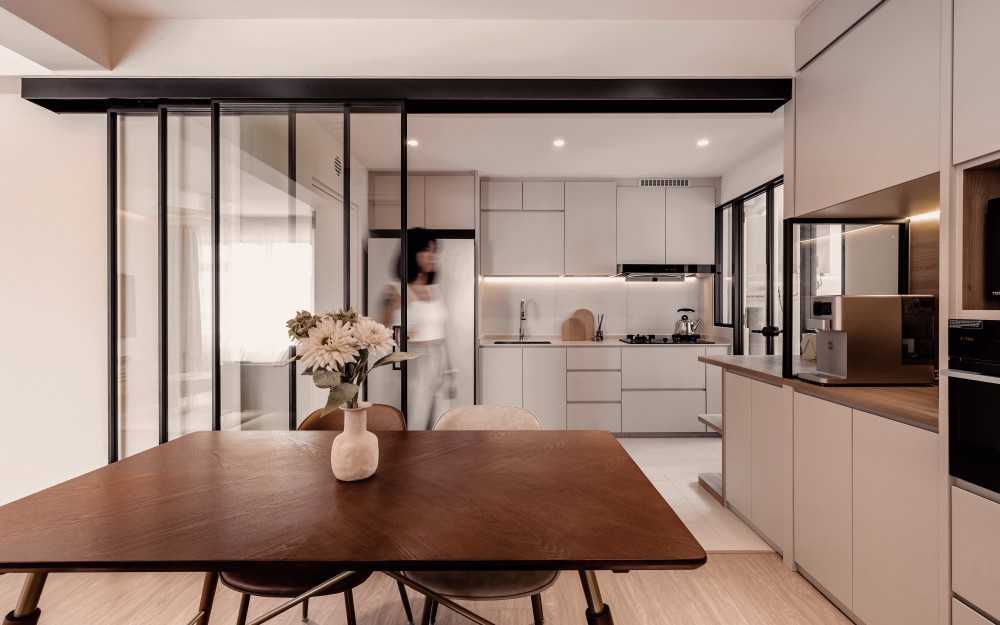

18A Circuit Road ($65,000) by Starry Homestead Pte Ltd
Pro-tip: Singaporean apartments are built in a pretty standard way, and there are a few “typical” layouts that tend to be reused over and over again (especially in BTO apartments).
To gain valuable insights into optimizing your own living space, consider reaching out to friends and family who might share a similar floor plan.
If you do find someone who has the same layout as you do, ask if you can visit their apartment to see what they’ve done with their space.
By doing so, you’ll be able to see how this homeowner has navigated whatever design constraints they face with this specific layout, and how they’ve tailored their living environment to suit their needs.
You might discover innovative storage solutions, clever furniture arrangements, or design elements that enhance both functionality and aesthetics in a space that’s similar to yours.
On the other end of the spectrum, you might realize what you don’t want to do with your apartment – which is a discovery just as valuable as finding inspiration.
By visiting homes with similar layouts, you have the opportunity to identify design choices or configurations that may not align with your taste, lifestyle, or functional requirements.
Step 4: Consulting With An Interior Designer
While your personal vision is at the core of your dream space, seeking professional guidance can bring invaluable expertise to the table.
Consult with an interior designer or decorator who understands the nuances of designing spaces in Singapore.
Here, communication is key. The more clearly you can articulate your preferences, lifestyle, and the unique elements you want to incorporate, the better the designer can tailor their recommendations to your vision.
Be open and transparent about your budget constraints, timeframes, and any specific challenges you foresee.
This collaborative approach fosters a partnership where both your creative aspirations and the designer’s practical insights contribute to the success of the project.
Semi-D at Holland ($110,000) by 13 Degree Design Studio Pte Ltd
Additionally, don’t hesitate to ask questions and seek the designer’s input on how to maximize the potential of your space. Their experience can offer fresh perspectives, introducing innovative solutions that you might not have considered.
Remember, the goal is not to relinquish control but to collaborate effectively.
Your input is invaluable, and a skilled designer can elevate your ideas, refine them, and bring them to life in ways you might not have imagined.
Together, you can co-create a dream space that seamlessly merges your vision with professional expertise.
Step 5: Making Your Dream Home A Reality
In transforming your dream home from a mental image into a concrete reality, the challenge lies in minimizing the gap between the expectations harbored in your mind and the tangible outcome.
How can you ensure that the design concepts, colors, and textures you envision seamlessly translate into the physical space?
Here, we explore a few tips to navigate this transformative journey and make your dream home a harmonious and tangible reflection of your vision.
Virtual tools for visualization
Technology has made visualizing your dream space easier than ever.
Here, you can explore user-friendly design apps and software that allow you to create virtual mock-ups of your home.
These apps, such as virtual room planners and interior design software, are equipped with intuitive interfaces that make the creative process accessible to individuals without a design background.
Experimenting with different layouts becomes a dynamic and interactive experience, as you can easily drag and drop elements to explore various spatial arrangements.
You can also virtually place and rearrange furniture items, experimenting with different configurations to find the most functional and aesthetically pleasing layout.
In essence, these digital design tools serve as your creative playground, where you can experiment with layouts, furniture arrangements, and color schemes until you find the perfect combination.
This iterative process not only refines your vision but also instills confidence in the decisions you make for your dream space.
Testing paint colors and material samples
Now that your vision is taking shape, it’s time to bring it to life through materials and colors.
Begin by experimenting with paint colors to find the perfect palette that resonates with your vision.
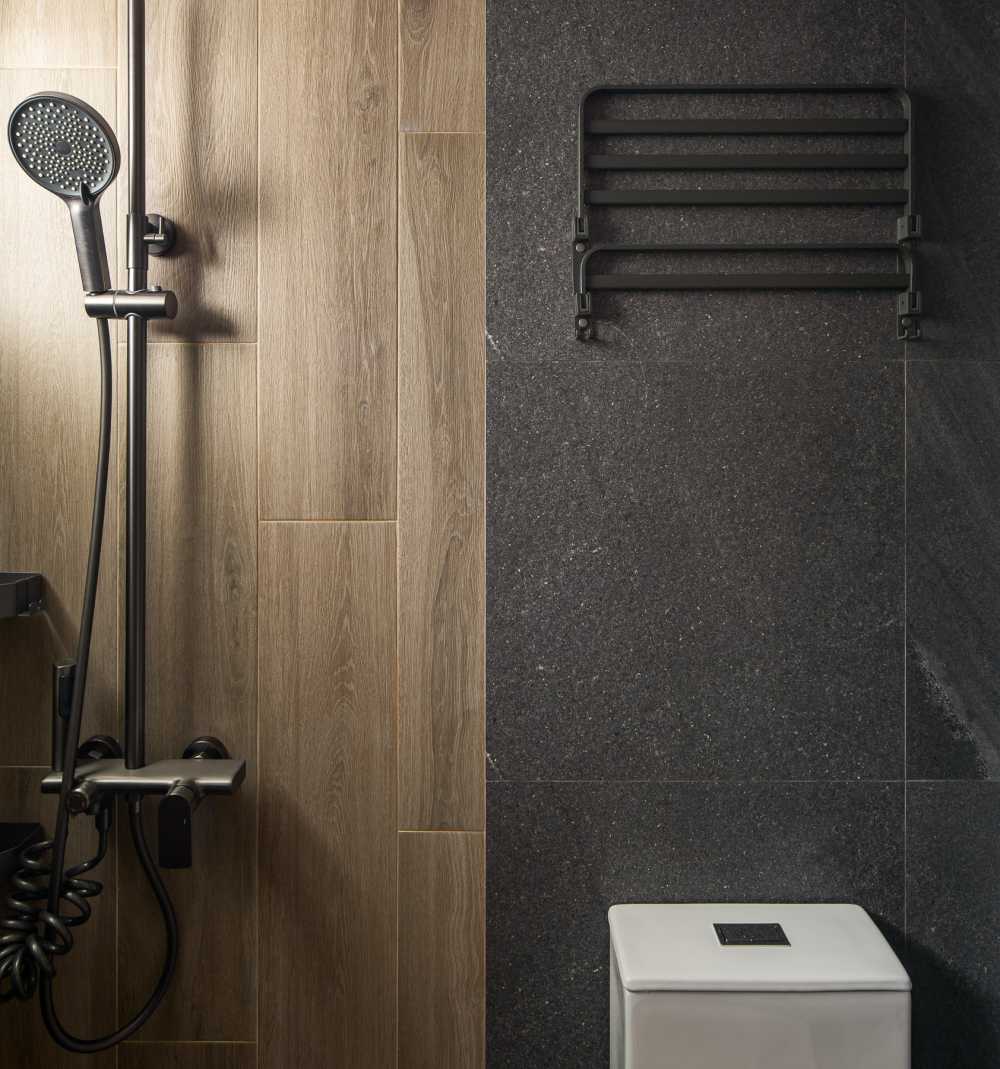

213B Bidadari Park Drive ($65,000) by Mr Designer Studio
Test different hues in various lighting conditions to understand how they interact with natural and artificial light sources. Consider the atmosphere you aim to create in each room, whether it’s a cozy retreat with warm tones or an energizing workspace with vibrant colors.
This testing process ensures that the chosen paint colors align harmoniously with the envisioned ambiance.
Beyond color, delve into the realm of textures and finishes for materials.
Whether you’re considering wall coverings, flooring options, or furniture surfaces, explore a variety of textures to add depth and visual interest to your spaces.
Experimenting with materials in a physical or digital context allows you to assess how they feel under different conditions, ensuring that the tactile qualities align seamlessly with the sensory experience you envision for your dream home.
Consider the interplay of materials and colors across different elements of your space.
For instance, how does the texture of a plush rug complement the finish of your furniture? How do the chosen materials for countertops resonate with the overall color scheme of your kitchen?
By exploring these combinations, you not only enhance the visual appeal of your home but also create a cohesive and unified design narrative.
Implementing changes gradually
When embarking on a renovation, adopting a gradual approach can be a strategic and practical choice.
Rather than diving headfirst into an extensive overhaul, consider initiating changes incrementally.
Start small by focusing on a single room or a specific area within your home. This initial step serves as a controlled experiment, allowing you to test and refine your design ideas in a low-risk environment.
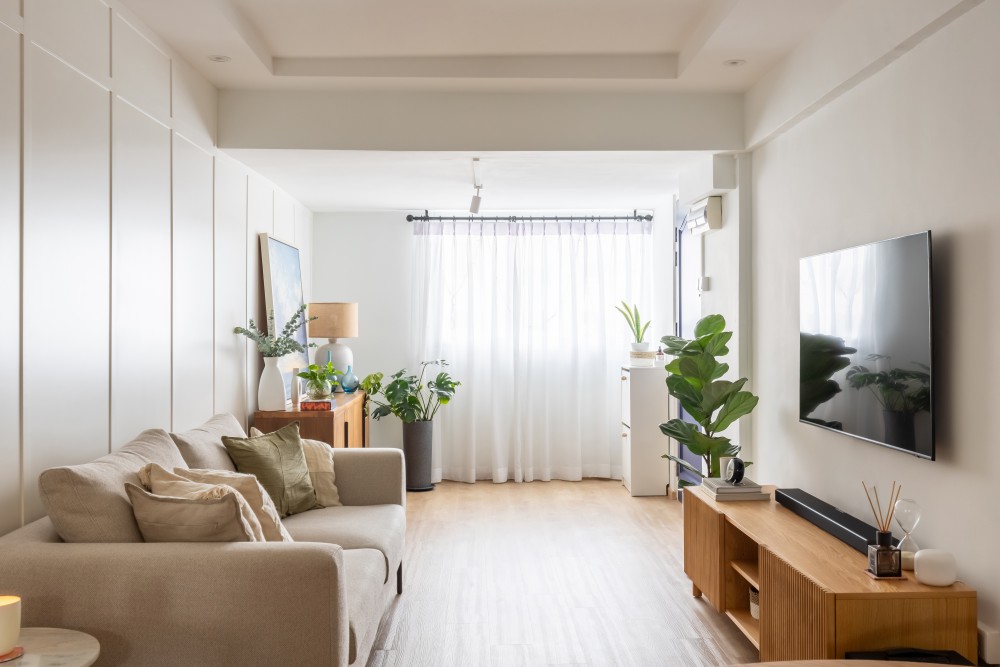

Aljunied Crescent ($50,000) by U-Home Interior Design Pte Ltd
By taking the time to experiment with one element at a time, such as furniture, color schemes, or decor, you can carefully assess how each addition interacts within the space.
This deliberate method provides a crucial advantage—it enables you to gauge your preferences, make adjustments as needed, and ensure that the evolving design aligns seamlessly with your vision.
The caution against making numerous decisions at once stems from the risk of the final result diverging from what you initially imagined.
When you introduce changes gradually, it becomes easier to visualize the overall aesthetic and maintain consistency. Ordering new furniture or making design decisions step by step allows you to witness how each element fits into the evolving narrative of your dream space.
Leave space for your personal style to evolve
Acknowledging the dynamic nature of personal style is key to creating a home that stands the test of time.
Embrace the reality that individual tastes can evolve over the years, influenced by changing trends, life experiences, and personal growth.
When crafting your dream space, consider incorporating flexible design elements that can gracefully adapt to these shifts.
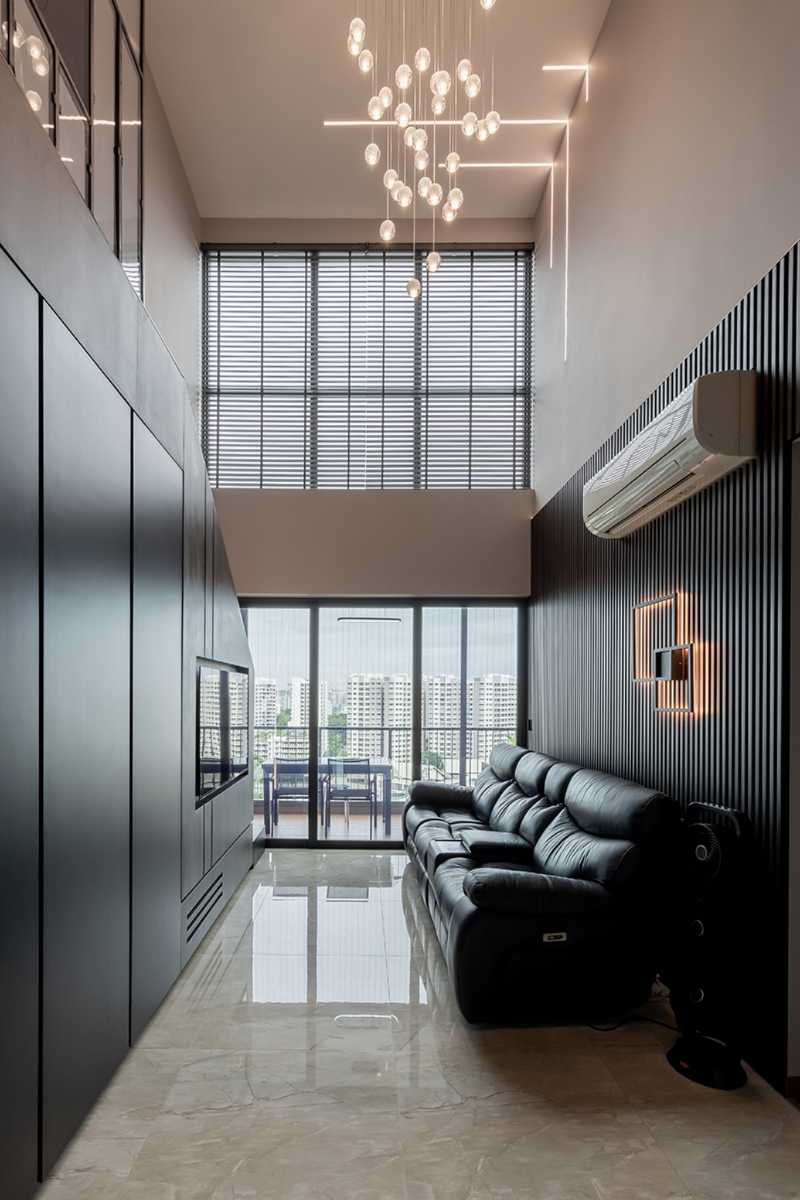

68 Upper Serangoon View ($20,000) by Our Interior
One effective way to ensure your space remains a reflection of your evolving preferences is by choosing timeless foundational pieces.
Opt for furniture with classic lines and neutral colors that serve as versatile canvases. These timeless pieces act as a consistent backdrop, allowing you to experiment with more trend-driven accessories or decor items that can be easily replaced or updated as your style evolves.
Another strategy is to focus on the versatility of key design elements.
Consider using modular furniture that can be rearranged to suit different layouts or purposes. This adaptability ensures that your space can effortlessly transform to meet changing needs, accommodating new lifestyle preferences or functional requirements.
When it comes to color schemes, choose neutral tones for larger, more permanent elements such as walls and flooring.
This provides a timeless base that can easily accommodate shifts in accent colors or patterns through accessories like rugs, throw pillows, or artwork. These smaller, interchangeable elements allow you to infuse current trends without committing to a complete overhaul.
In essence, designing with adaptability in mind ensures that your dream space remains a living reflection of your personality and preferences.
By incorporating flexible elements that can seamlessly evolve with you, you create a home that not only suits your current tastes but also grows and transforms in sync with the dynamic nature of personal style.
A Final Word On Visualizing And Creating Your Dream Space
Crafting your dream home involves a blend of inspiration, thoughtful planning, and adaptability.
From finding inspiration online and locally to creating a vision board, understanding your space, consulting with professionals, and using virtual tools, each step contributes to the realization of your dream.
Implementing changes gradually and allowing your style to evolve ensures a harmonious, timeless space.
As you embark on this transformative journey, may your dream home become a tangible reflection of your unique personality and evolving tastes.
Want to check out home renovation projects for more inspiration? Browse home renovation projects on Hometrust, or click the button below to get connected with expert designers!
Renovating soon? Let Hometrust recommend the best interior designers.
If you are reading this, you are probably wondering how you can create your dream home.
Here’s the thing, everyone’s needs and requirements for their home renovation is different. A designer that may work for someone else, may not quite work for you.
At Hometrust, we’re here to help match top rated designers, recommended by past homeowners to you through our data-driven and matching algorithm.
Whether you are looking for partial renovation or a full fledge overhaul, we’ll be able to recommend you top designers to match your renovation requirements and lifestyle.
Recommendations and free and you can simply start by helping us understand your needs below!
Get RecommendationsRenovate safe!
The Hometrust Team

